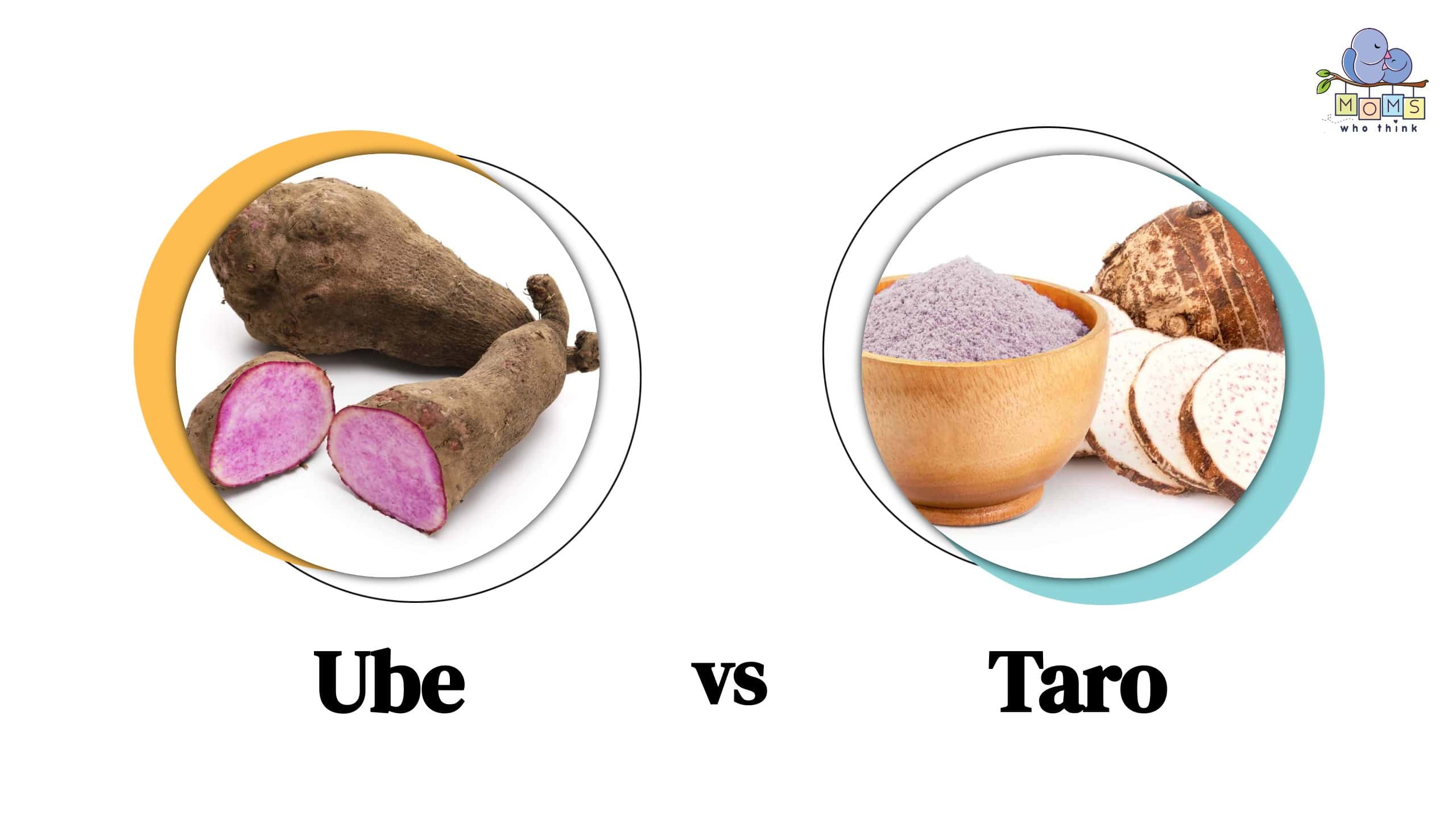You’re probably familiar with your red and green foods, but what about purple? If you’ve popped into a bubble tea store in the last few years, you’ve probably noticed the popularity of a certain purple-tinted milk tea. Or maybe you’ve gone into a supermarket and seen pancake mixes that advertise purple batter. You might think it’s food dye, but actually, you’re likely seeing something that uses ube or taro as an ingredient. What is ube, what is taro, and how are they different? Read on to become an expert.
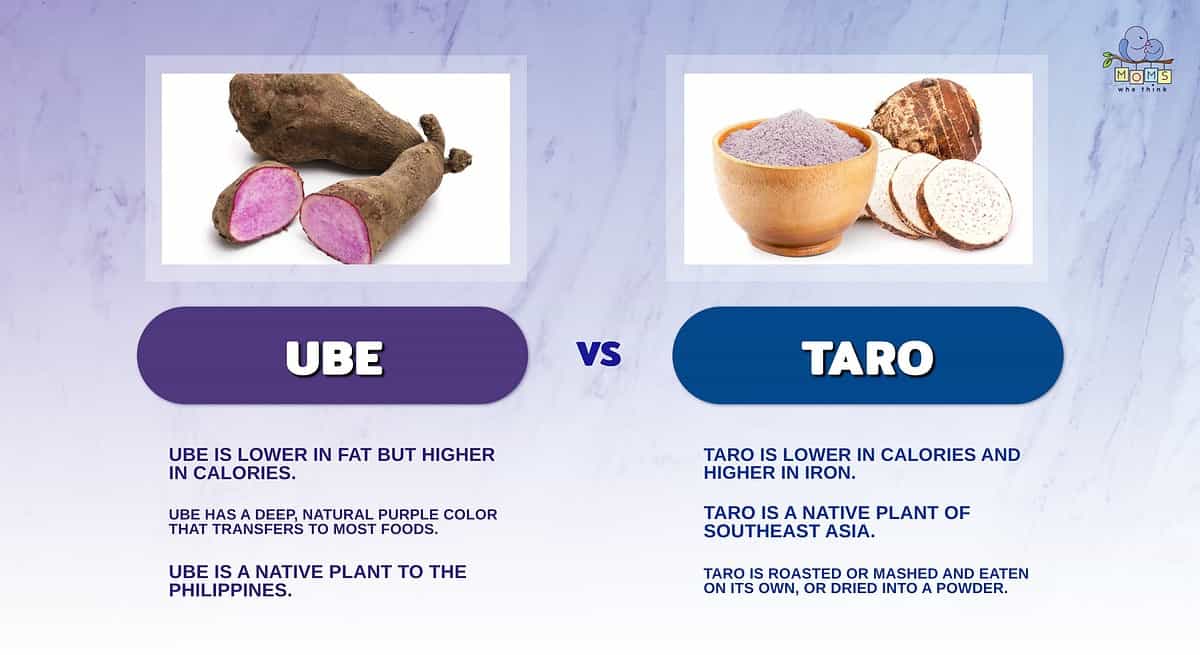
What is Taro?
Taro has roots in Southeast Asia and is a staple crop of countries in the Pacific, like New Zealand. The name “taro” is actually borrowed from the Maōri language, belonging to the indigenous Polynesian people of New Zealand. Taro is also sometimes called eddo or dasheen.
We eat the part of taro that grows underground like a root, called a corm. Taro is considered a starch and is cooked and consumed as such. It’s often roasted or mashed and eaten on its own, or it’s dried into a powder (after being cooked) which can be added to baked goods to add flavor and texture. Taro cannot be eaten raw because it has a bitter bitter compound called calcium oxalate which can cause itchiness in the throat and mouth if eaten before being cooked.
Taro, like ube, has a ton of health benefits we’ll get to later on. First, let’s go over ube.
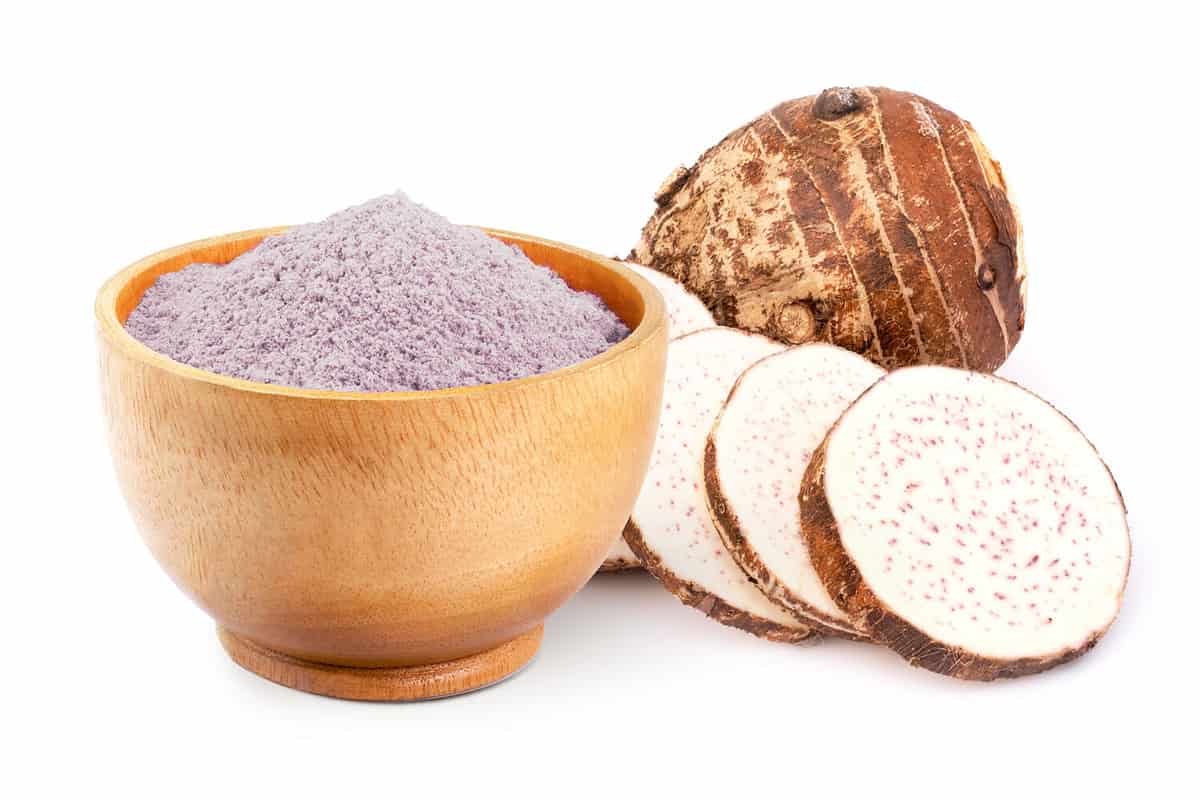
©NIKCOA/Shutterstock.com
What is Ube?
Ube is also a starch and a tuber, like taro. “Ube” actually means tuber in Tagalog, the main dialect of the Phillippines, where ube is a native plant.
The word tuber originates from the Latin word tuber, meaning “lump, bump, or swelling.” These plants carry such a name because their nutrient-storing structure looks like a big swelling from out of the plant and grows underground. Some other tuber examples include taro, jicama, cassava, and potatoes, of course.
When cooked, ube turns a rich, vibrant purple that makes it such a fun addition to a main dish or to a baking recipe. But it’s not all appearance. The purple hue of the plant is there because of the presence of some really awesome antioxidants, which we’ll look at below. But something else you should know about ube is that when cooked, it has a much sweeter flavor than other starches, including taro and potatoes.
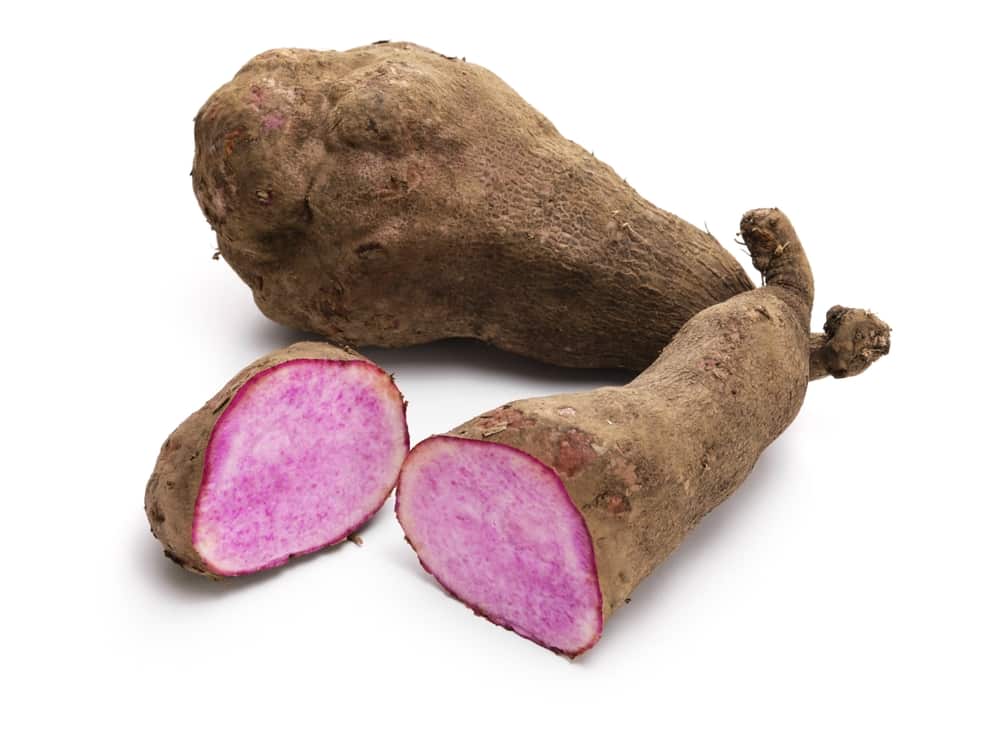
©bonchan/Shutterstock.com
Ube vs. Taro: Nutritional Profile
Ube and Taro are both loaded with nutrients and antioxidants, making them both great choices to try out in the kitchen. You might even call them superfoods!
Taro has resistant starch in it, which is a kind of carb that’s great for weight loss and management. It stabilizes blood sugar, which helps to manage appetite. When we eat something high in sugar, our body tends to think it's hungrier than it actually is. Foods that have sugars that break down more slowly help us to stay fuller longer.
Ube also has components that help with blood sugar and weight management. They’re rich in flavonoids, which have anti-oxidative, anti-inflammatory, anti-mutagenic, and anti-carcinogenic properties that are a boon to improving one’s health. Ube’s carbs are also broken down slowly, like taro, and therefore result in a more gradual release of energy, as opposed to blood sugar spikes.
Taro and Ube both have anthocyanins which can be found in other foods like blueberries, grapes, and plums. Anthocyanins give foods a purplish-bluish pigment, but they also are amazing antioxidants that can help reduce susceptibility to toxins.
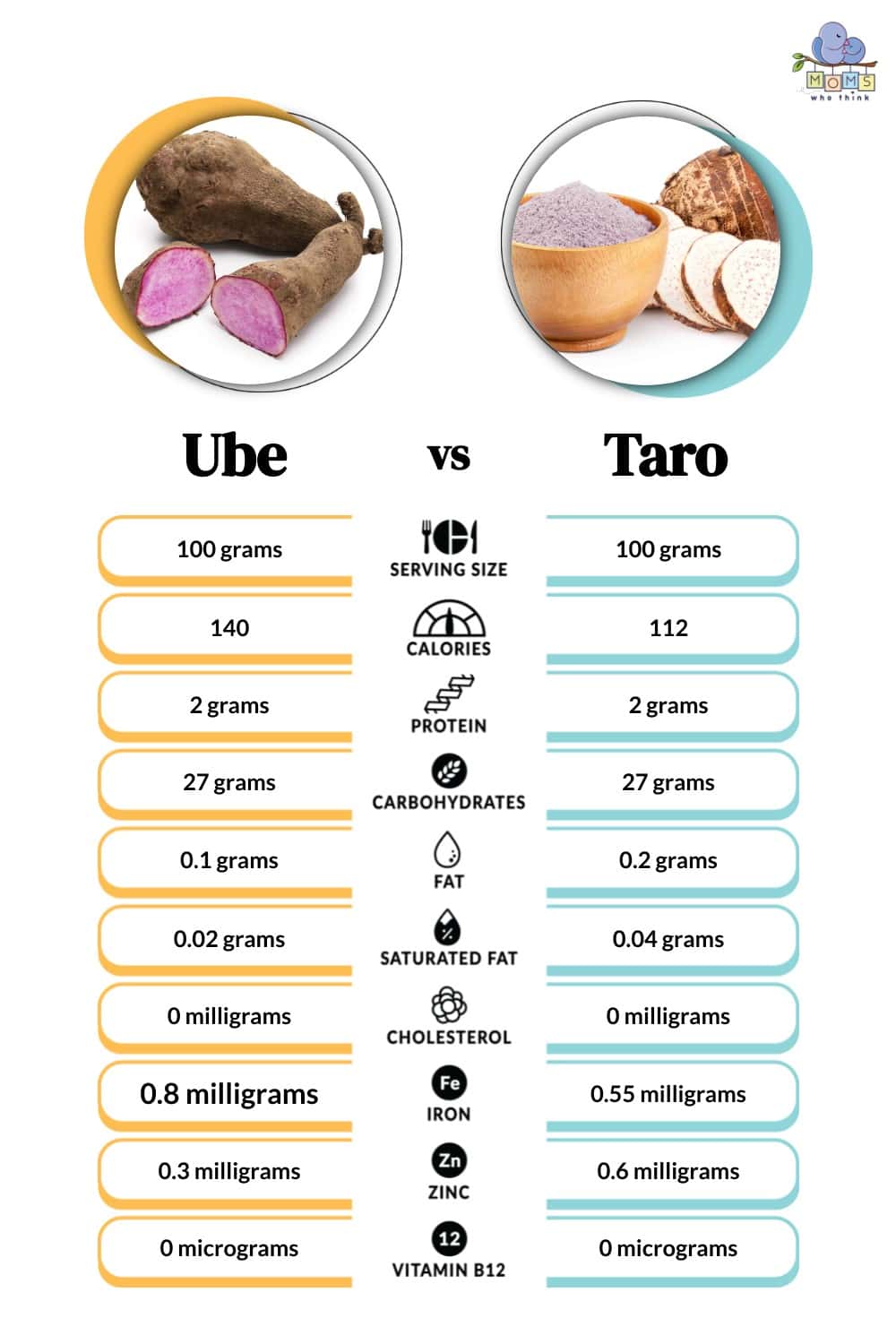
Ube vs. Taro: 4 Key Differences
While ube and taro are often confused with each other, the two tubers are actually pretty different.
Taro isn’t actually all that purple in pigment. When you see those purple bubble tea drinks, the purple hue is actually caused by adding some food coloring in order to make the drink more appealing. Ube is much more purple-hued than taro.
Ube is also sweeter than taro. People often mention vanilla when trying to place the taste of ube, and due to that and its sweetness, it is often used in desserts. Taro is more nutty in flavor and if it is added to desserts, usually it's because someone is after a more subtle sweet taste.
As you can tell from the nutritional profile above, ube has fewer calories than taro does. Both of them are rich in nutrients, so one isn’t necessarily unhealthier than the other. But if you’re looking to cut calories specifically, ube might be the better choice.
Another big difference between ube and taro is where each is cultivated. Ube is native to the Phillipines so if you’re eating at a Filipino restaurant or looking to make a Filipino-inspired dish, ube is probably going to be a consideration. If, however, you’re at an Asian-Pacific restaurant or bakery, you’re more likely to see taro mentioned on the menu.
How to Cook with Taro
As mentioned earlier, you should never eat raw taro because it has a bitter, itchy compound present before it's cooked. But you’ll rarely eat any tubers raw because their flavors and textures don’t really become appealing until cooked.
Whether you’re planning to eat taro on its own or dry it and add it to a milk tea or baked good, you need to cook it first. You’ll peel it like you do a potato, while also rinsing it under water. The starch of taro makes it pretty sticky to handle when you’re peeling it. People also recommend wearing gloves when handling uncooked taro, just in case that compound causes irritation to your skin.
Once your taro is peeled and prepped, you can cook it any way you’d like. If you want to create a powder to add to smoothies or flour, you’ll mash the cooked taro into a paste, spread it onto a baking sheet, and dehydrate it. Then, once it’s dehydrated, you can grind it up finely into a powder.
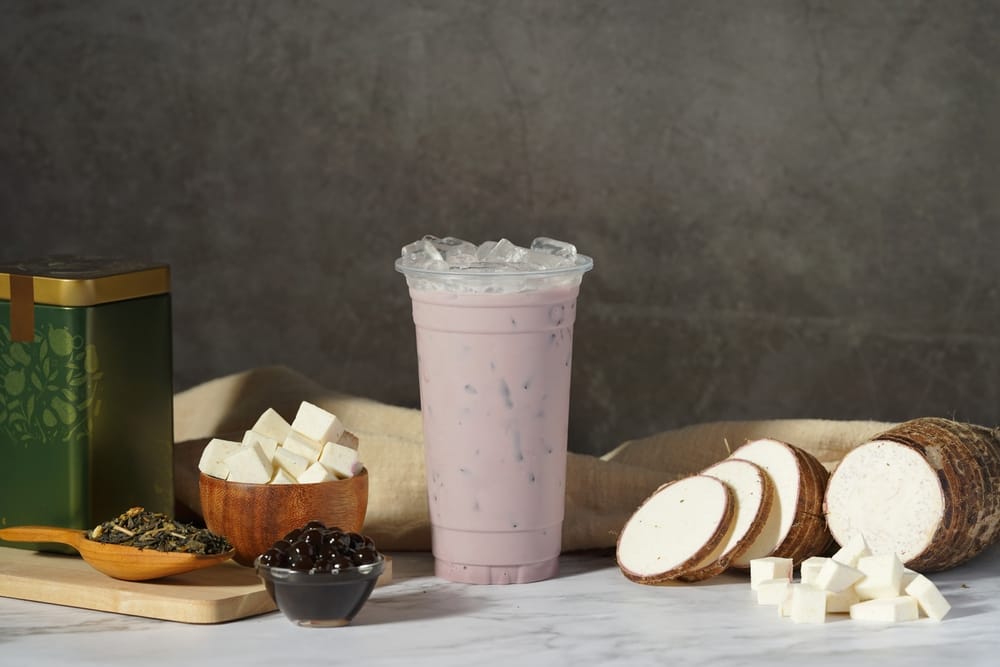
©JellyFishBrain/Shutterstock.com
How to Cook with Ube
You cook ube pretty much the same way you cook taro! You’ll want to peel it first and then you can prepare it however you’d like. Boiled, roasted, mashed, baked, or fried, you can choose whichever cooking method you’re partial to.
To make an ube powder that can be added to desserts, you’ll follow the same drying method you use with taro, as mentioned above.
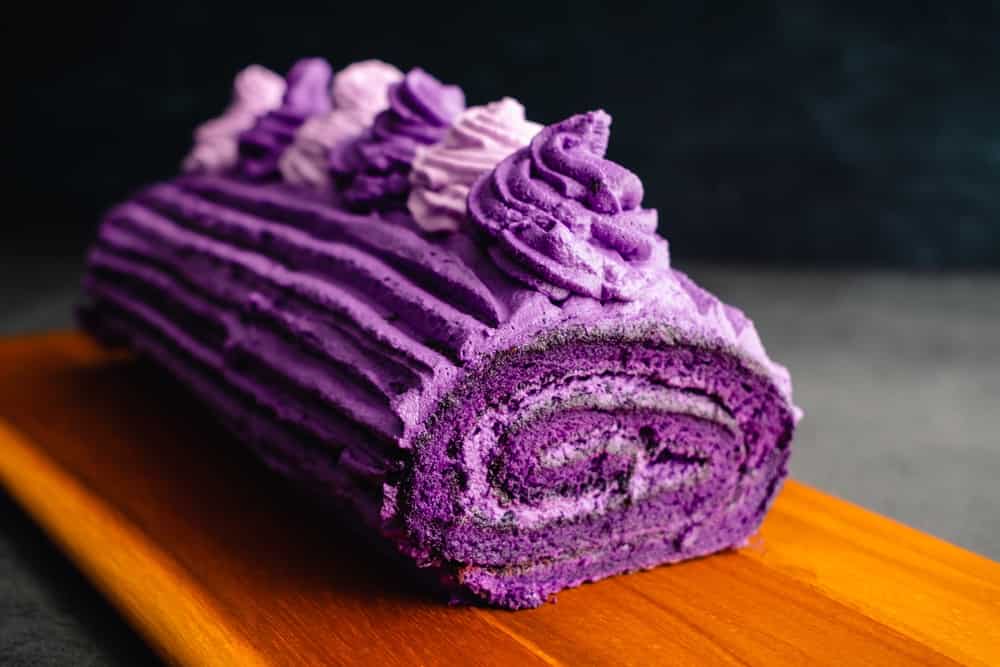
©Candice Bell/Shutterstock.com
Final Thoughts
Whether you decide to go with ube or taro, you’re sure to add a ton of antioxidants — and a fun color! — to your food. It might help to get your kids more excited to eat breakfast if instead of having their regular pancakes, one morning they get to try some purple pancakes! It's always a little weird to try something new, but when it comes to ube and taro, there are really no drawbacks. You just have to go out on a limb and try something new.
Print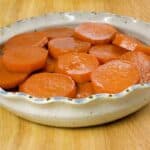
Healthy Candied Yams
- Yield: 6 servings
Description
This dish is the perfect accompaniment to any main course. If you do happen to make this during the holidays, rest assured that it won't just be “one of the side dishes” it will be the side dish your family will ask for again and again.
Ingredients
- 3 (1 1/2 cups) medium yams
- 1/4 cup brown sugar, packed
- 1 teaspoon flour, sifted
- 1/4 teaspoon salt
- 1/4 teaspoon ground cinnamon
- 1/4 teaspoon ground nutmeg
- 1/4 teaspoon orange peel
- 1 teaspoon soft tub of margarine
- 1/2 cup orange juice
Instructions
- Cut yams in half and boil until tender but firm (about 20 minutes).
- When cool enough to handle, peel and slice into 1/4-inch thickness.
- Combine sugar, flour, salt, cinnamon, nutmeg, and grated orange peel.
- Place half of the sliced yams in a medium-sized casserole dish.
- Sprinkle with the spiced sugar mixture.
- Dot with half the amount of margarine.
- Add a second layer of yams, using the rest of the ingredients in the same order as above.
- Add orange juice.
- Bake uncovered for 20 minutes in oven that was preheated to 350 degrees.
Nutrition
- Serving Size: 1/4 cup
- Calories: 110
- Sodium: 115mg
- Carbohydrates: 25g
- Fiber: 2g
- Protein: 1g
